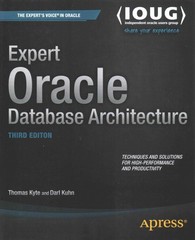Question
Your job is to build a simulator that reads a memory trace and simulates the action of a virtual memory system with a single level
Your job is to build a simulator that reads a memory trace and simulates the action of a virtual memory system with a single level page table. Your simulator should keep track of what pages are loaded into memory. As it processes each memory event from the trace, it should check to see if the corresponding page is loaded. If not, it should choose a page to remove from memory. If the page to be replaced is dirty (that is, previous accesses to it included a Write access), it must be saved to disk. Finally, the new page is to be loaded into memory from disk, and the page table is updated. Assume that all pages and page frames are 4 KB (4096 bytes). Of course, this is just a simulation of the page table, so you do not actually need to read and write data from disk. Just keep track of what pages are loaded. When a simulated disk read or write must occur, simply increment a counter to keep track of disk reads and writes, respectively. Implement the following page replacement algorithms: LRU. FIFO. VMS' second chance page replacement policy. You can find its description in the textbook (Chapter 23) and a more detailed description at the end of this document. Structure and write your simulator in any reasonable manner. You may need additional data structures to keep track of which pages need to be replaced depending on the algorithm implementation. Think carefully about which data structures you are going to use and make a reasonable decision. You need to follow strict requirements on the interface to your simulator so that we will be able to test and grade your work in an efficient manner. The simulator (called memsim) should take the following arguments: memsim
The first argument gives the name of the memory trace file to use. The second argument gives the number of page frames in the simulated memory. The third argument gives the page replacement algorithm to use. The fourth argument may be "debug" or "quiet" (explained below.) If the fourth argument is "quiet", then the simulator should run silently with no output until the very end, at which point it should print out a few simple statistics like this (follow the format as closely as possible): total memory frames: 12 events in trace: 1002050 total disk reads: 1751 total disk writes: 932 If the fourth argument is "debug", then the simulator should print out messages displaying the details of each event in the trace. You may use any format for this output, it is simply there to help you debug and test your code. Use separate functions for each algorithm, i.e.: your program must declare the following high level functions: lru(), fifo() and vms().
Step by Step Solution
There are 3 Steps involved in it
Step: 1

Get Instant Access to Expert-Tailored Solutions
See step-by-step solutions with expert insights and AI powered tools for academic success
Step: 2

Step: 3

Ace Your Homework with AI
Get the answers you need in no time with our AI-driven, step-by-step assistance
Get Started


